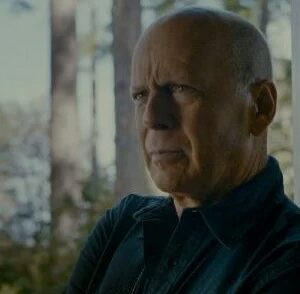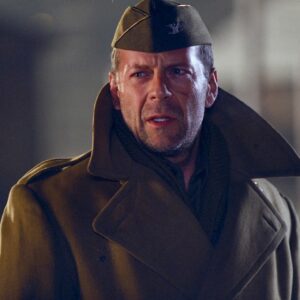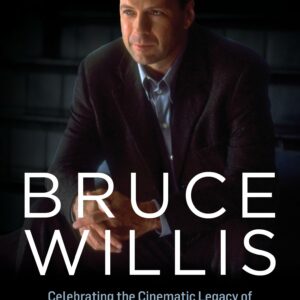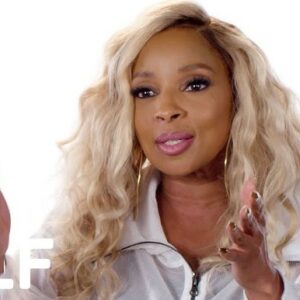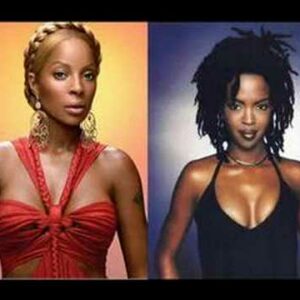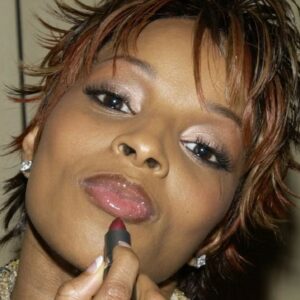Introduction
Ryan Gosling has been in Hollywood long enough to know the game inside out, but he’s never just played by the rules. His career is a living testament to how collaboration with boundary-pushing directors can sculpt an actor into something far more profound than a performer reciting lines. For Gosling, it’s all about immersion, intensity, and a certain humility toward the craft and the visionaries who guide it. In an industry bursting with noise, Gosling has quietly carved his own space, built largely on collaborations that go beyond standard actor-director dynamics. These are transformative partnerships that have defined his career and, in many ways, redefined the possibilities for character acting in the modern era. In this article, we take a closer look at how Gosling’s journey alongside directors like Damien Chazelle, Nicolas Winding Refn, and Denis Villeneuve has shaped not just his career, but his very creative process.
Collaborating with Visionary Directors
Ryan Gosling’s performances resonate with a depth that comes from a commitment to bringing a director’s vision to life. But these aren’t just any directors. Gosling’s taste in collaborators is astute, drawing him to some of the most inventive minds in the industry. It’s not about prestige alone—it’s the alignment of artistic intention and an understanding of cinema as a language in its own right. Working with directors who are known for bold storytelling and visual flair has encouraged Gosling to shed any preconceptions and take on a level of vulnerability that’s rare, even in Hollywood.
Damien Chazelle, whose musical fever dream “La La Land” saw Gosling as a jazz pianist balancing ambition and love, unlocked a side of the actor that even fans hadn’t fully seen. Here was Gosling, usually restrained, shedding that restraint in favor of rhythm, choreography, and an emotional openness that felt fresh and intensely real. Chazelle, known for his near-manic attention to detail, pushed Gosling into uncharted territory. It was about more than hitting the right notes or steps; it was about capturing the obsession, the highs, and the lows of artistic passion. For Gosling, Chazelle’s approach set the stage for one of his most layered performances yet.
Then there’s Nicolas Winding Refn, whose collaborations with Gosling in “Drive” and “Only God Forgives” have given fans an entirely different view of the actor. Where Chazelle coaxed light and melody, Refn stripped everything down, creating a character defined by silence, intensity, and a simmering menace that speaks louder than any dialogue. Refn’s minimalist approach allowed Gosling to explore the power of presence, relying on subtle gestures and body language over words. In “Drive,” Gosling’s Driver is a mystery wrapped in a leather jacket, the kind of role that’s less about emoting and more about being. Refn understood this dynamic well, and under his guidance, Gosling delivered a masterclass in restraint.
With Denis Villeneuve, Gosling faced a different beast entirely. Villeneuve’s “Blade Runner 2049” was a monumental task—a sequel to a beloved sci-fi classic that demanded introspection and intellect as much as physicality. Gosling’s performance as the replicant K is one of nuance and existential weight, and Villeneuve’s poetic, almost philosophical approach to filmmaking was crucial in bringing out a new dimension in him. Here, Gosling wasn’t just playing a role; he was a part of a cinematic canvas, a moving piece in Villeneuve’s meditative puzzle. These collaborations didn’t just impact Gosling’s career—they transformed him into an actor capable of subtlety, passion, and complexity, showcasing his adaptability and his relentless pursuit of artistic depth.
Shaping His Creative Process
Gosling’s process has evolved through these collaborations, each director challenging him in unique ways. When he first started, Gosling’s approach was raw, guided more by intuition than structured technique. Over time, working with directors who have strong, distinctive styles allowed him to develop a creative methodology that is both meticulous and flexible.
With Chazelle, Gosling’s process became more about embracing the chaotic preparation that jazz and performance demanded. He spent months learning to play the piano for “La La Land,” refusing to use a hand double. Chazelle’s relentless drive was contagious, and Gosling’s commitment to authentically capturing the experience of a jazz musician became a personal mission. This level of preparation wasn’t about mere accuracy; it was about embodying a lifestyle, a passion, and ultimately, a loss that gave his character, Sebastian, a raw authenticity.
Refn’s sets are famously minimalistic and often tense, an environment that pushed Gosling to pare down his performances. In “Drive,” he’s almost mute, allowing his body language to do the talking. This role taught him the power of silence and physical presence, skills he would carry forward into future roles. Refn gave him the freedom to explore minimalism, which in turn refined Gosling’s ability to convey emotion without leaning on dialogue. This “less-is-more” approach has since become a hallmark of Gosling’s style, adding a compelling undercurrent to his more dialogue-heavy roles.
Villeneuve’s influence on Gosling’s process was almost philosophical. “Blade Runner 2049” demanded a contemplative, almost existential approach. Villeneuve’s visionary style, rich with allegory and philosophical undertones, nudged Gosling to consider the “why” of every gesture, every glance, every pause. For an actor already known for his introspective style, this deepened his understanding of performance as a mode of inquiry—a way of asking questions rather than delivering answers. Gosling has since approached his roles with a newfound awareness of thematic purpose, allowing him to tap into a broader range of human emotion and experience.
Key Collaborations That Defined His Career
Certain partnerships have undoubtedly left a lasting impact on Gosling’s career, carving out milestones in his journey as an actor and artist. His work with Chazelle, Refn, and Villeneuve stands out not just for the quality of the films but for the risks he took in each role.
In La La Land, Chazelle’s vision paired perfectly with Gosling’s commitment to mastering the role. The film was not only a critical and commercial success but also a chance for Gosling to show a new side of himself. For fans who had come to expect intense, serious roles, his turn as a jazz musician in a musical was a revelation, highlighting his versatility.
With Drive, Refn and Gosling created an enigmatic, iconic character who said little but communicated volumes. The film’s cult status cemented Gosling as a serious actor capable of dark, moody roles with a quiet intensity. This role became a defining moment, proving that Gosling could deliver powerhouse performances with minimal dialogue, using silence as a narrative tool.
In Blade Runner 2049, Gosling’s K is a haunting figure, weighed down by the existential questions of identity and humanity. Villeneuve’s poetic direction and Gosling’s introspective performance made for an unforgettable cinematic experience, leaving audiences both haunted and moved. This collaboration redefined Gosling’s capabilities as an actor, revealing a sophistication and depth that would influence the rest of his career.
Learning from Directors
For Gosling, directors are more than just collaborators—they’re mentors. He has often spoken of the insights he has gained from working with directors who are not afraid to push boundaries. Each of these filmmakers—Chazelle, Refn, Villeneuve—has left an indelible mark on his craft.
Chazelle taught him the importance of unbridled passion and precision, a combination that pushes performances from good to extraordinary. With Refn, Gosling learned to embrace restraint, honing his ability to communicate complex emotions with minimalism. And with Villeneuve, he discovered the power of subtlety and symbolism, finding meaning in silence and stillness. These directors have expanded Gosling’s artistic horizons, transforming him into a storyteller who understands the intricacies of visual language, atmosphere, and emotional nuance.
Future of His Collaborations
As Gosling’s career continues to evolve, so too does his approach to collaboration. He has hinted at wanting to work behind the camera, indicating that his experiences with these directors may inspire him to take on a new role in the creative process. Having observed firsthand how visionaries like Chazelle, Refn, and Villeneuve craft stories, Gosling is likely to bring a unique perspective to directing—one that marries his introspective acting style with a broader artistic vision.
Given his track record, it’s clear that Gosling’s future collaborations will continue to push the boundaries of his craft. He has never shied away from risk, and with each new partnership, he brings a commitment to storytelling that is rare and invaluable in an industry often swayed by trends. Whether he steps behind the camera or continues to explore challenging roles, Gosling’s dedication to creative growth ensures that his legacy will be as much about his evolution as an artist as it is about his individual performances.
Conclusion
Ryan Gosling’s journey in Hollywood is one defined by transformation, risk, and an unrelenting pursuit of artistic depth. His collaborations with directors like Damien Chazelle, Nicolas Winding Refn, and Denis Villeneuve have not only elevated his performances but have also redefined him as an actor willing to go beyond the superficial to capture something real. These partnerships have been more than career milestones—they’ve been critical to his creative evolution, shaping his unique approach to storytelling and performance.
In an industry where it’s easy to settle into a typecast or fall into safe roles, Gosling’s commitment to working with visionary directors and embracing challenging roles is a testament to his respect for the art of filmmaking. He is, and will continue to be, one of Hollywood’s most compelling performers, an artist who understands that the true power of cinema lies in collaboration, transformation, and the courage to pursue something beyond the expected.
